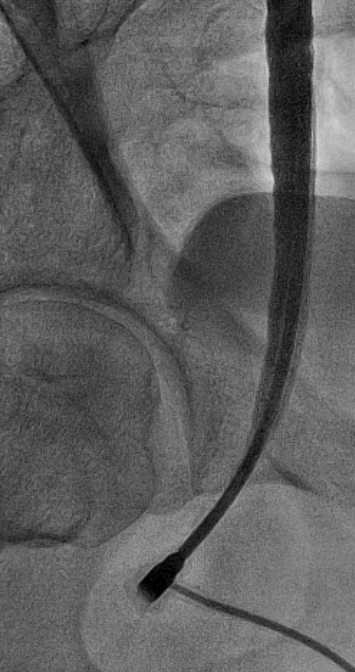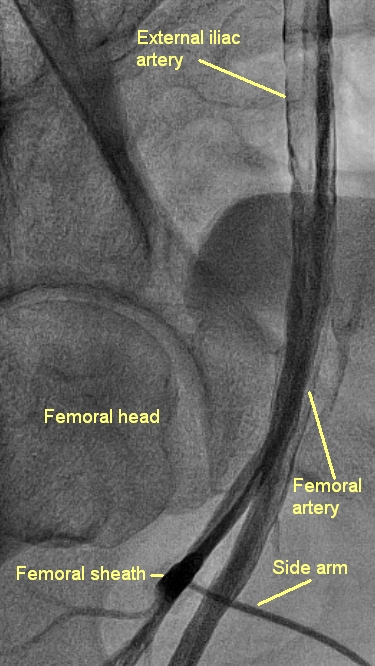Femoral arterial sheath check shots
Femoral arterial sheath check shots

Femoral arterial sheath check shot with radiocontrast is taken occasionally to see if there is any vascular injury. Often it is done at the end of the procedure before pulling out the sheath, if there is a doubt of vascular injury. The contrast is injected through the side arm used for flushing the valved femoral arterial sheath. Contrast fills the femoral artery and a variable portion of the external iliac artery depending on the force of the injection. The contrast is flushed down rapidly as the injection is retrograde and the flow antegrade. Panning downwards is useful to assess the popliteal artery and its branches in the leg as well.

The femoral head is often used as a landmark in case of fluoroscopy guided femoral arterial puncture when blind puncture is not successful. The bulbous portion of the proximal end of the femoral sheath has a valve which prevents back flow while facilitating rapid catheter exchanges. The introduction of the valved sheaths had decreased the propensity for femoral arterial injury and back bleed in the earlier era of catheterisation when catheter exchanges were over a guide wire alone. Side arm is useful to check the pressure within the lumen of the artery as well. This is sometimes done when there is a doubt whether the tip is perfectly within the lumen of the femoral artery or in a false lumen.
The femoral artery becomes the external iliac artery above the inguinal ligament. Care should be taken not to puncture above the inguinal ligament as a hematoma which may occur in that location will be an extra peritoneal intra-abdominal hematoma, which is more difficult to drain. Intra abdominal hematomas can extend rapidly and cause exsanguination in rare cases. It is also difficult to control the bleeding with local pressure if the oozing is intra abdominal. At the same time too low a puncture might hit the femoral bifurcation or the profunda femoris artery, which is also likely to cause difficult to control bleeds.
